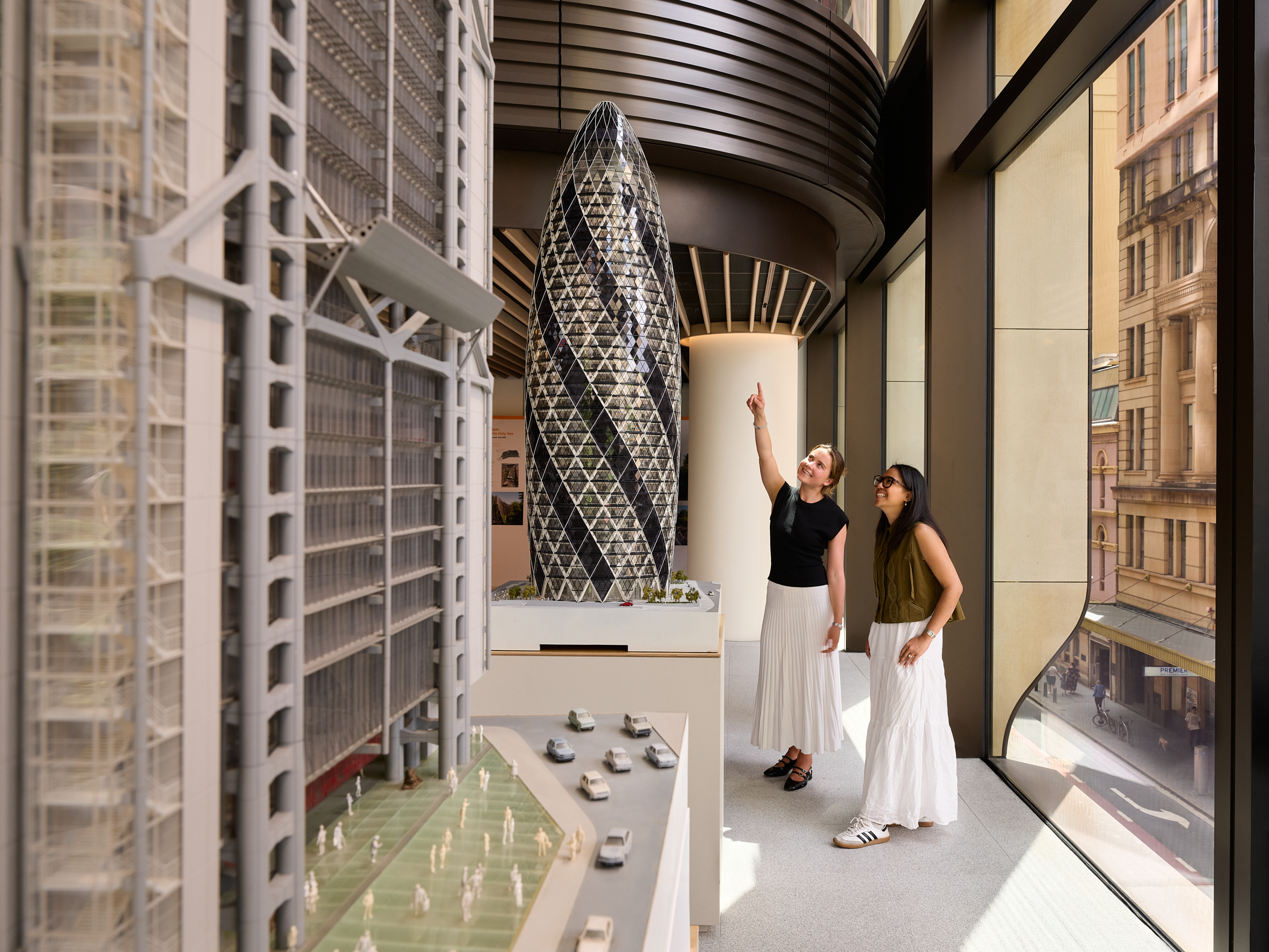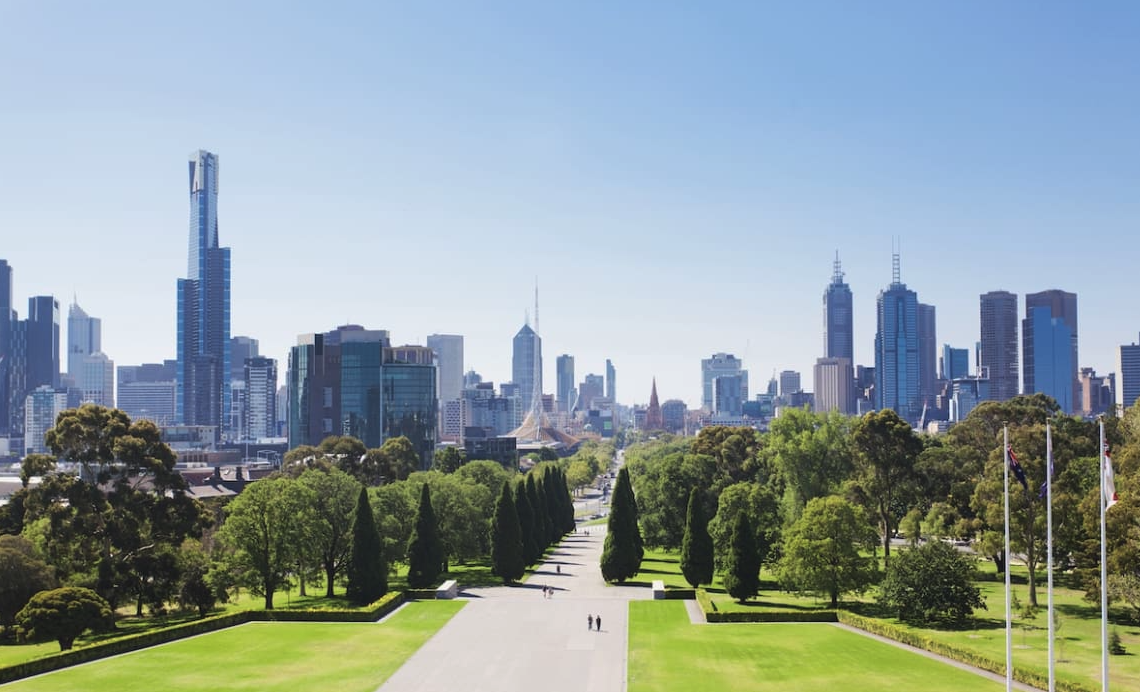Taking lessons in French in the heart of Sydney
A stunning transformation by award-winning designer Greg Natale takes a basic Sydney home to a whole new level
From the Spring issue of Kanebridge Quarterly. Order your copy here
When you engage a designer like Greg Natale, there’s a level of expectation that comes with that. An international sensibility is a given, as is attention to detail and a good dose of opulence. What you might not anticipate though, is flexibility or speed.
But when Natale got the call from the owners to work on their home in Oatley in Sydney’s south, the ability to make haste was an essential element.
“The owner had grand ideas and she needed someone really quickly to help her because she had started (the build),” he says.
“I had to move walls and the bricklayers (were already) there.”
Natale describes the existing Development Application for the brand new home as ‘basic’ with little of the detail he would normally require to undertake a project.

The owner had her heart set on a Georgian-style two-storey home more often seen in Melbourne suburbs such as Kew or Brighton, characterised by a symmetrical facade, with a French influence, but the approved DA came up lacking. There was also little evidence of the sense of home the owners wanted to create.
“Georgian style is classic but it’s quite simple,” Natale says.
To make the necessary changes, he submitted a Section 4.55 with council which allows for modifications to the DA and created the opportunity to ‘rejig’ the floorplan at the rear and introduce some softness to the design.
“I wanted this house to feel very soft — it’s where interior design is now,” he says. “When I started opening all the spaces at the back, we introduced these really beautiful fluted portals into the big lounge and the big dining room.”
Indeed, fluting has been used extensively in the detailing of this house, linking spaces and adding a textural layer that simultaneously makes rooms feel permanent and welcoming. It’s a strategy designed to imbue warmth to the understated soft grey palette, while letting the detailing be the hero.

This decision to stay with the single colour for most of the living spaces makes the blue dining room and adjoining study feel even more exceptional, almost extravagant.
“The rest of the house is all quite calm and the dining room is calm too — but it’s moody,” he says. “You start with the blue and we liked all those European interiors where you have all those highly lacquered bookshelves.”
A master class in pattern and colour, Manohari Delft wallpaper from UK textiles company, Designers Guild, has been applied to the dining room walls with cobalt blue lacquered bookshelves and a coffered ceiling in the same colour.
A custom made rug from Natale’s own collection for Designer Rugs injects a softer, more organic element, with the salmon pink harmonising with burgundy-coloured dining chairs and Japan black dining table.

Next door, the small study has gone even bolder with Atlantis Aube wallpaper from the Christian Lacroix range for Designers Guild.
“The study space is the owner’s,” he says. “She had this vision for this really big pattern in that study and I wanted another room to talk to that dining room.”
While the temptation in a house like this would be to fit it out with Art Deco-style pieces and antiques, furniture is unashamedly modern. Natale says it was a deliberate move to keep spaces elegant, but light.
“She didn’t want a heavy home and if we started using Art Deco-style furniture or anything traditional it would have been very heavy — and I don’t think that look is in anyway,” he says.
“The owners both liked modern and clean design but they also love this Georgian style so it was mixing both.
“That look of mixing modern, Danish and Italian (furniture is happening) in France and even in Milan, and with those beautiful old floors and the panelling, we were definitely emulating that look.”
While the US has dominated interior design trends over the past 10 to 15 years, with names like Kelly Wearstler and Martyn Lawrence Bullard, Natale says all eyes are now on Europe.
“Ten or 15 years ago, it was all about New York and LA and Palm Springs but now it’s really looking at Europe — even Americans are looking at Europe now,” he says.
“We are probably using more European furniture now and all the European brands are here so it’s a bit easier.
“Design is definitely looking at Italy, Denmark and France now.”

Although Natale went to great lengths to finesse every aspect of this house, it’s also about what you can’t see.
“The owner does a bit of (property) developing and he has an aircon business and because of that, I really pushed the detail in the aircon,” he says. “All the aircon here comes out of slots or shadowlines of the cornice.
“The days of sticking in a grill and then Photoshopping it (out of images), I’m not interested in that. I want the air conditioning to be integrated.”
To really embed the five-bedroom property, the whole site has been landscaped with soft hedging and evergreen planting that will look good all year round.
“The landscaping really anchors the architecture and as the plants grow it will enhance that further,” he says. “In that area, there are a lot of big houses like that and if you don’t have good landscaping the house just sits there like a UFO.”
More: gregnatale.com
Records keep falling in 2025 as harbourfront, beachfront and blue-chip estates crowd the top of the market.
A divide has opened in the tech job market between those with artificial-intelligence skills and everyone else.
The 2026 McGrath Report warns that without urgent reforms to planning, infrastructure and construction, housing affordability will continue to slip beyond reach for most Australians.
Australia’s housing market has reached a critical juncture, with home ownership and rental affordability deteriorating to their worst levels in decades, according to the McGrath Report 2026.
The annual analysis from real estate entrepreneur John McGrath paints a sobering picture of a nation where even the “lucky country” has run out of luck — or at least, out of homes.
New borrowers are now spending half their household income servicing loans, while renters are devoting one-third of their earnings to rent.
The time needed to save a 20 per cent deposit has stretched beyond ten years, and the home price-to-income ratio has climbed to eight times. “These aren’t just statistics,” McGrath writes. “They represent real people and real pain.”
McGrath argues that the root cause of Australia’s housing crisis is not a shortage of land, but a shortage of accessibility and deliverable stock.
“Over half our population has squeezed into just three cities, creating price pressure and rising density in Sydney, Melbourne and Brisbane while vast developable land sits disconnected from essential infrastructure,” he says.
The report identifies three faltering pillars — supply, affordability and construction viability — as the drivers of instability in the current market.
Developers across the country, McGrath notes, are “unable to make the numbers work” due to labour shortages and soaring construction costs.
In many trades, shortages have doubled or tripled, and build costs have surged by more than 30 per cent, stalling thousands of projects.
Need for systemic reform
McGrath’s prescription is clear: the only real solution lies in increasing supply through systemic reform. “We need to streamline development processes, reduce approval timeframes and provide better infrastructure to free up the options and provide more choice for everyone on where they live,” he says.
The 2026 edition of the report also points to promising trends in policy and innovation. Across several states, governments are prioritising higher-density development near transport hubs and repurposing government-owned land with existing infrastructure.
Build-to-rent models are expanding, and planning reforms are gaining traction. McGrath notes that while these steps are encouraging, they must be accelerated and supported by new construction methods if Australia is to meet demand.
One of the report’s key opportunities lies in prefabrication and modular design. “Prefabricated homes can be completed in 10–12 weeks compared to 18 months for a traditional house, saving time and money for everyone involved,” McGrath says.
The report suggests that modular and 3D-printed housing could play a significant role in addressing shortages while setting a new global benchmark for speed, cost and quality in residential construction.
Intelligent homes
In a section titled Weathering the Future: The Power of Smart Design, the report emphasises that sustainable and intelligent home design is no longer aspirational but essential.
It highlights new technologies that reduce energy use, improve thermal efficiency, and make homes more resilient to climate risks.
“There’s no reason why Australia shouldn’t be a world leader in innovative design and construction — and many reasons why we should be,” McGrath writes.
Despite the challenges, the tone of the 2026 McGrath Report is one of cautious optimism. Demand is expected to stabilise at around 175,000 households per year from 2026, and construction cost growth is finally slowing. Governments are also showing a greater willingness to reform outdated planning frameworks.
McGrath concludes that the path forward requires bold decisions and collaboration between all levels of government and industry.
“Australia has the land, demand and capability,” he says. “What we need now is the will to implement supply-focused solutions that address root causes rather than symptoms.”
“Only then,” he adds, “can we turn the dream of home ownership back into something more than a dream.”
ABC Bullion has launched a pioneering investment product that allows Australians to draw regular cashflow from their precious metal holdings.
Australia’s market is on the move again, and not always where you’d expect. We’ve found the surprise suburbs where prices are climbing fastest.




















